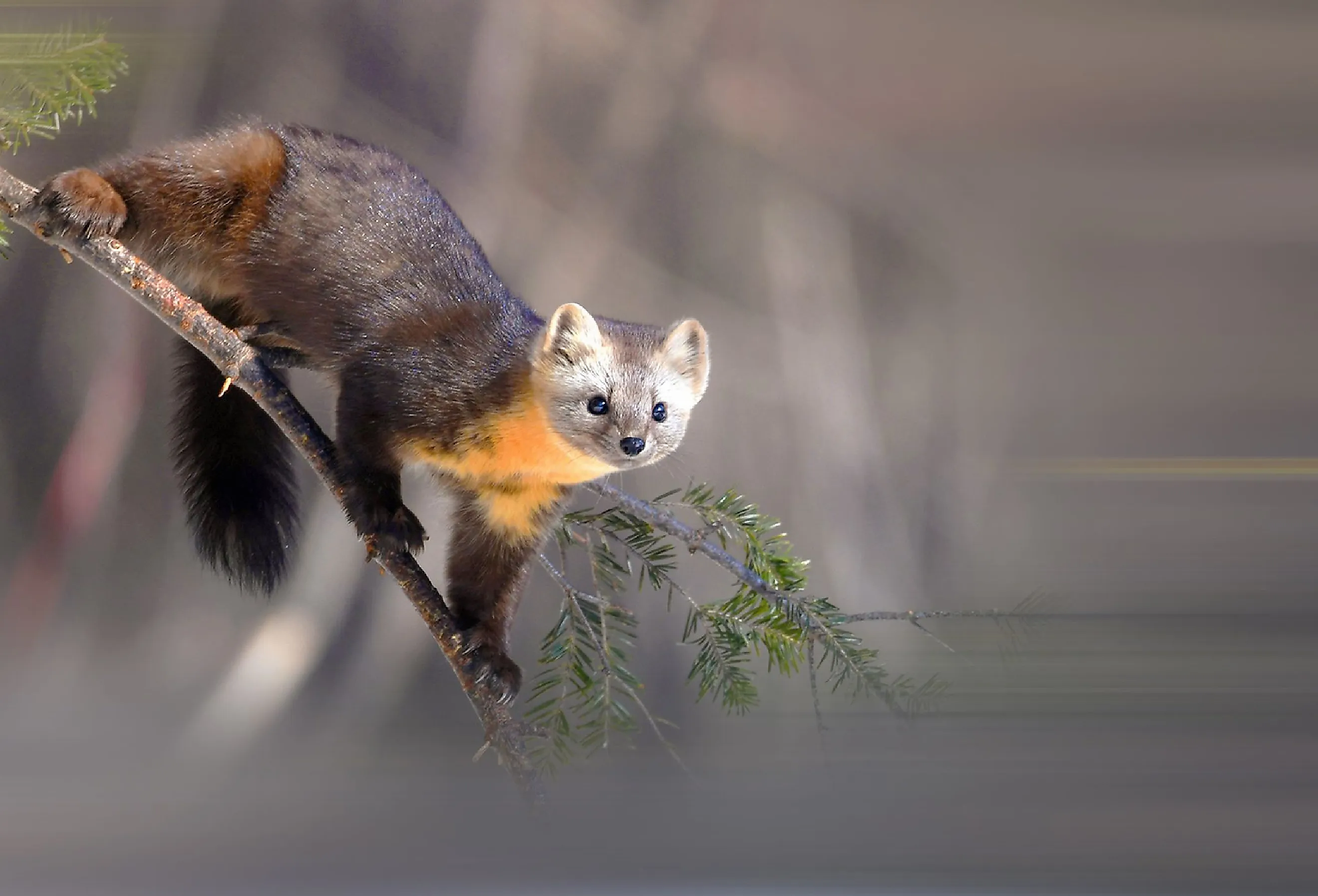
Sable
Deep in the dark, dense forests of Russia and Northern Asia, travelers will find a wiley and secretive creature, the sable (Martes zibellina). These small mammals are part of the weasel family, closely related to Martens and Fishers, with long, narrow bodies and fur color ranging from light to dark brown to almost black. Human demand for their silky, soft fur for clothing (softer than that of foxes and minks!) led to intensive hunting starting in the Middle Ages, in which wearing these furs was a status symbol of royalty and nobility. Thus, their populations were driven to near extinction. Today, although they are still hunted and farmed for their fur, the development of nature preserves and parks, as well as mass reintroductions have helped populations of this beautiful weasel rebound in many areas.
Range and Habitat
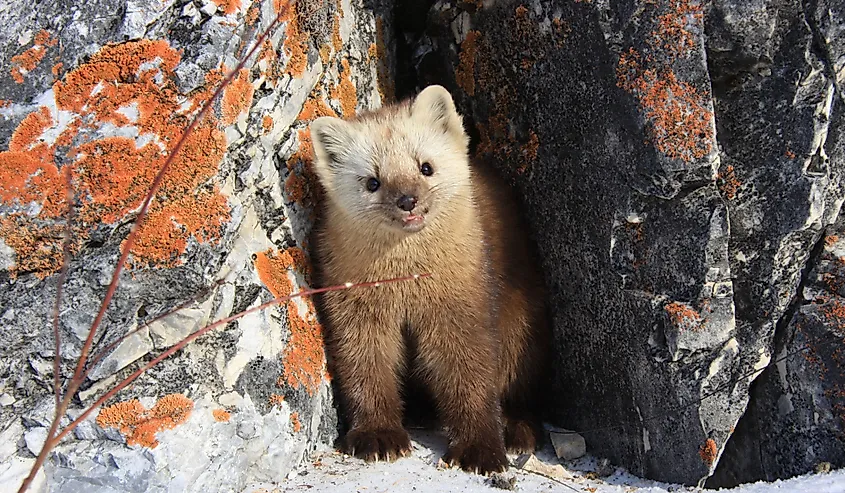
The sables' current range spans the mountainous and lowland forest regions of Russia, Siberia, Mongolia, Korea, China, Japan, and Kazakhstan. With their extra-furry feet and use of sheltered habitats, sables are able to withstand (and even thrive in) very cold temperatures. They are even found in Yakutia, which boasts the coldest winters in the Northern Hemisphere! They are also intolerant of high summer temperatures, so when weather conditions change with the seasons, they undergo a vertical migration up the mountain (in spring) and down the mountain (in winter). Although they are predominantly associated with evergreen (coniferous) forests, they will also use densely-treed deciduous forests, preferring older-aged trees in either case. They spend most of their time in the low understorey of the forest, where they forage for nuts, berries, and small mammals, and they build their well-hidden burrows and dens under tree roots or along riverbanks. Much of their life activities (e.g. hunting, foraging, nesting, etc) take place within their home range (anywhere from 4-30 km2), but they will travel farther if food is scarce in the area. The farthest recorded distance traveled by a sable is 300 km!
Diet
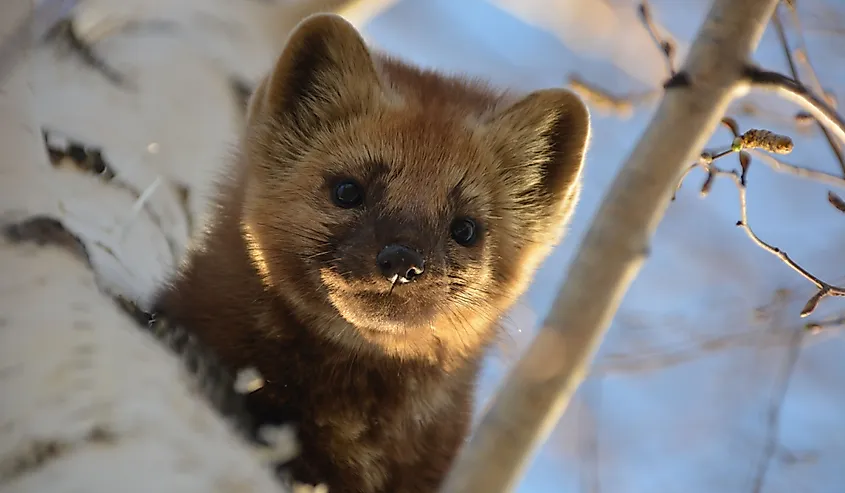
Sables are omnivorous (i.e. eating both plants and animals). Their diet varies by geographic location and season based on the availability of different food types. When plant food is plentiful, they tend to eat fewer animals, and in times of food scarcity, they will sometimes resort to scavenging food from human-developed areas or following the tracks of larger predators like bears and wolves to scavenge their leftovers. Generally, they eat nuts, berries, small mammals, and birds, but sometimes they will feast on fish, slugs, and even small deer! When taking down large prey (e.g. a musk deer 10 times their size!), the sable will leap onto their prey and bite through the skull, upper neck, or jugular vein, quickly killing them. They are crepuscular hunters (i.e. hunting at dawn and dusk) and locate their prey primarily using their excellent senses of sound and smell. Although they are adept climbers and will climb trees to escape predators, they prefer to hang out on the ground, where their prey and burrows are. Living in the extreme inclement climate of the Taiga, sables will often store food in their dens and then stay sheltered there for days until the weather has passed. Much of their winter hunting is done in the subnivean spaces (i.e. air pockets and passages underneath the snow) where their small mammal prey are scurrying about, protected from the elements. However, when snow is too deep, sables might switch to another prey type since they cannot access the subnivean space.
Behavior and Reproduction
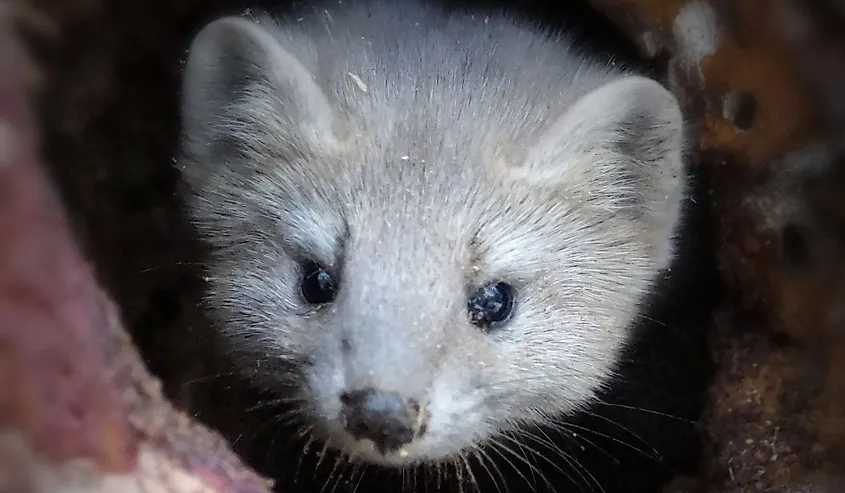
A solitary creature, the sable does its hunting alone and mostly only interacts with members of its own species during the mating season, although the young cubs also play with their siblings. At about 2-3 years old, sables are ready to mate. Females will enter estrous in spring, and males will begin vying for their attention by digging ruts in the ground and marking them with extremely odorous urine. Sables generally mate in the summer months (June to August), and here’s where things get interesting. After mating, the fertilized blastocyst will not implant into the uterine wall (i.e. delayed implantation) until eight months after mating! Once implantation finally occurs, the embryo will start developing and females will give birth to 1-7 cubs 25-30 days later. Young cubs are helpless and rely on their mother for care for about 7 weeks after birth, and will strike out on their own soon after their eyes finally open.
Importance
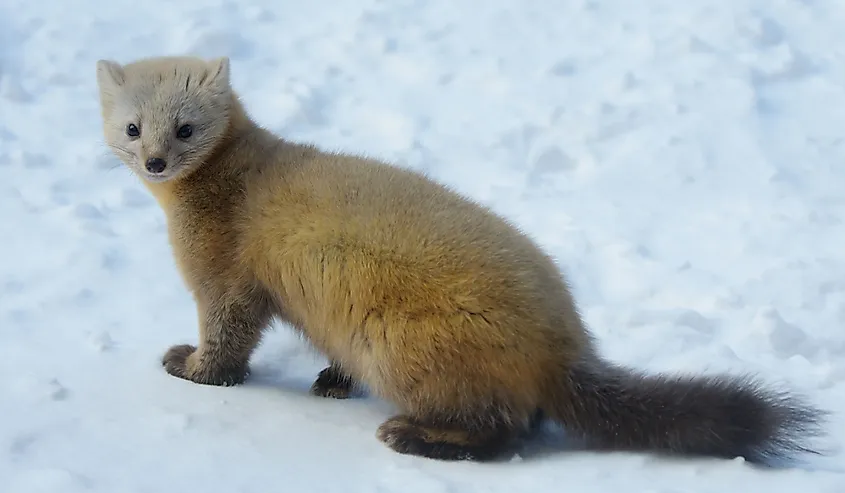
The Sable is a fascinating creature native to the wild Taiga of Eurasia and is important in its own right, as well as in a larger ecological context. Sables (and other Marten species) act as indicator species that warn of the potential impacts of threats like climate change and habitat destruction. Because sables are associated with dense, older forest stands, their declines or movements away from some areas might give us a clue as to the level of degradation or destruction the forest has endured. Conversely, their presence and abundance in other areas might indicate a healthy old forest ecosystem, the protection of which could benefit many other old-forest-dependent species. As a species that requires cold climates and thrives in the frigid Taiga plains as well as higher elevations in the mountains, sables are also shifting their distribution towards higher elevations with climate warming, giving them less and less habitat to rely on. Other species that rely on these same habitat types or environmental conditions will benefit from the conservation of this indicator species.
Threats
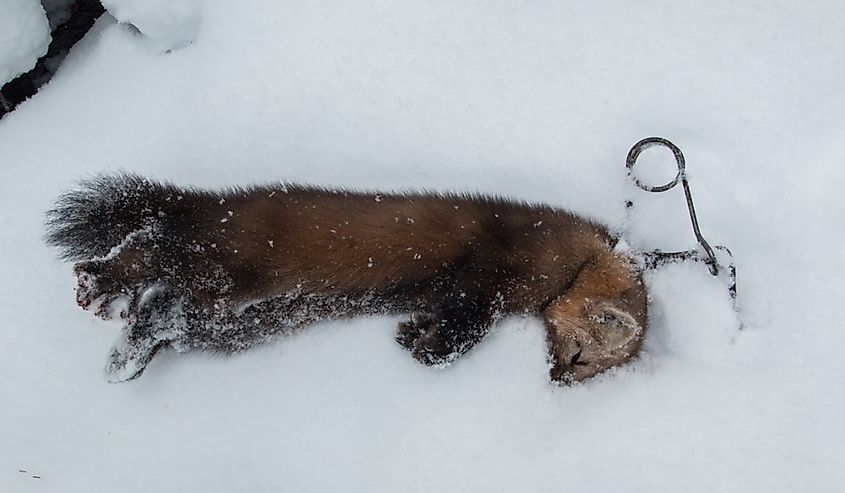
Beginning in the Middle Ages, the intensive hunting of sables led to their near eradication by the late 1600s, with populations not recovering for another three centuries. Only in the mid-1900s were hunting regulations, bans, and mass sable reintroductions started. Although hunting pressures have decreased in recent years, this practice is ongoing and is still a threat to individuals. Logging and oil and gas development are also important threats to the sable, as these practices can degrade or remove the older dense coniferous forests that they rely on for their survival. Furthermore, with climate warming, there are fewer available areas that meet the temperature niche needed for sables to survive. As temperatures warm, sables are starting to move to higher and higher elevations, and there’s only so far they can go and only so much space! Despite these threats, and declining population trends in some areas, populations in most regions are stable or increasing, with over 2 million individuals estimated in the population. The International Union for the Conservation of Nature has designated them a species of “least concern” across their range, but within some parts of their range they have been listed as vulnerable (Mongolia) or threatened (DPR Korea). Sables are protected in nature and game in reserves, and national parks, and scientifically-backed hunting quotas are designed to maintain sustainable hunting of the species. However, the species is also acknowledged to be “data deficient”, meaning we may not have the data needed to come to accurate conclusions about their conservation status.
Conclusion
After centuries of humans overhunting sables to keep up with the fur fashion trends and signal their status in society, this beautiful and resilient species is now rebounding in many areas. Mysterious, harsh, and wild as its Eurasian Taiga home, there is much we don’t know about the enigmatic sable, leaving plenty of opportunity for future learning and research!











